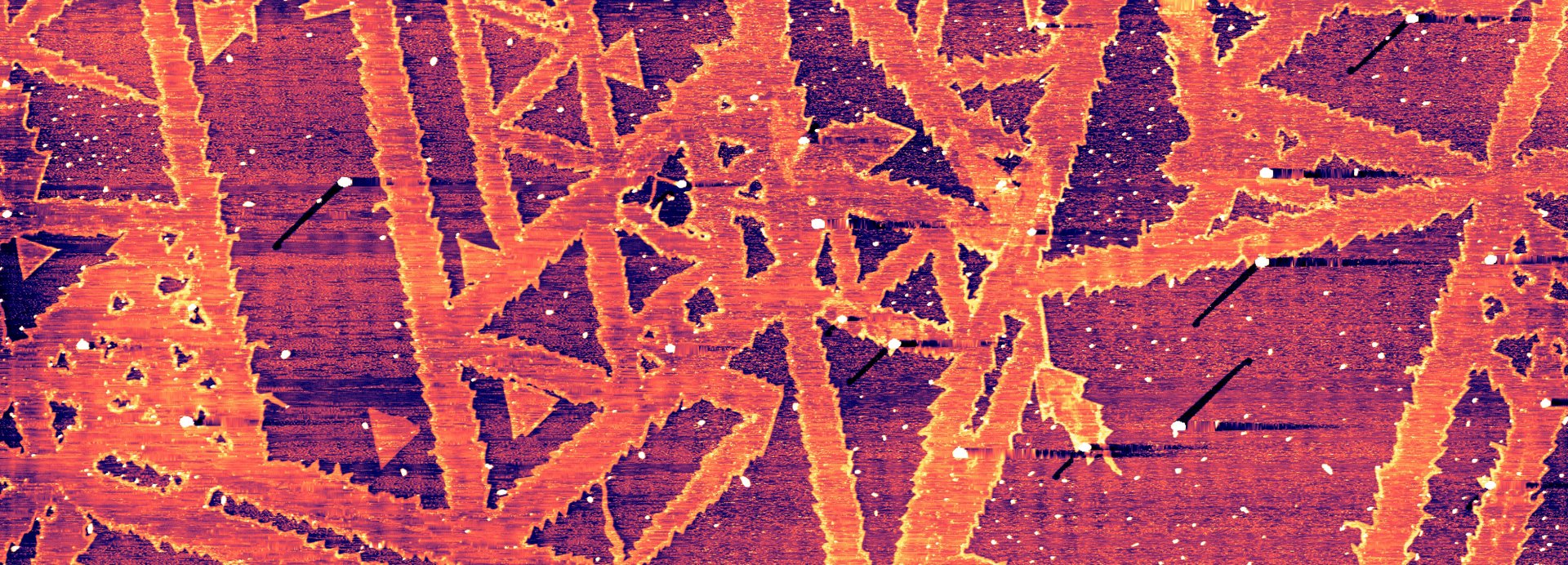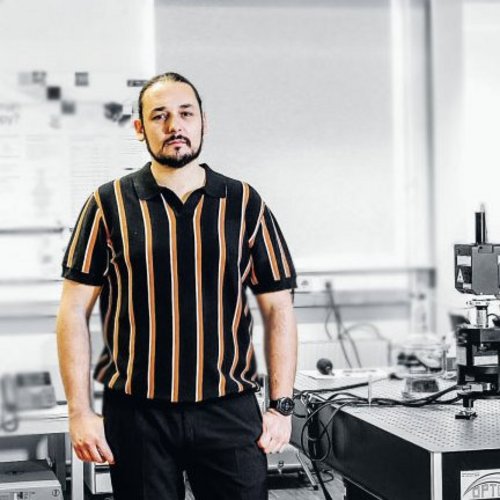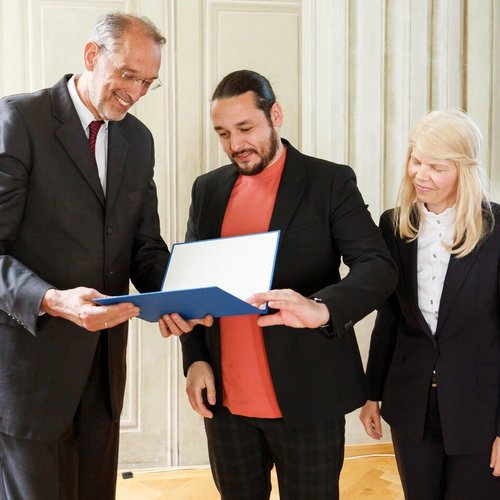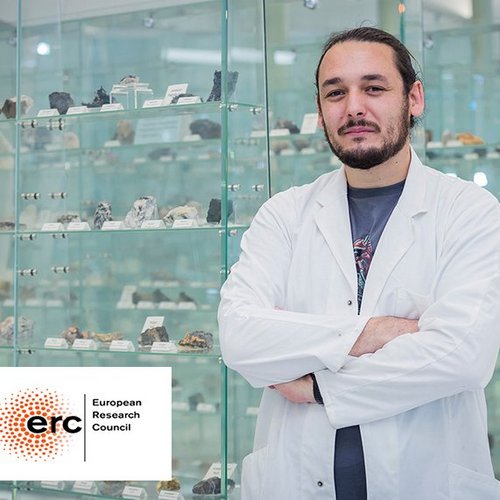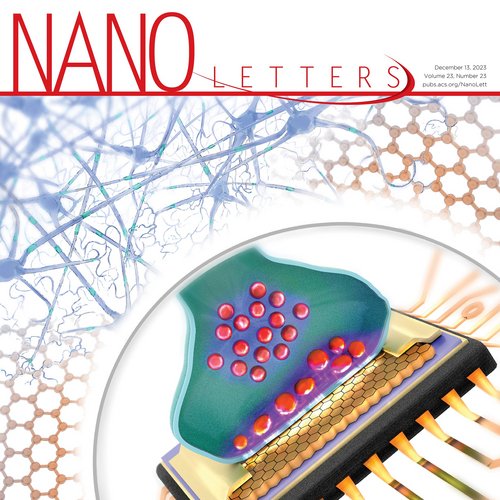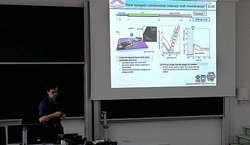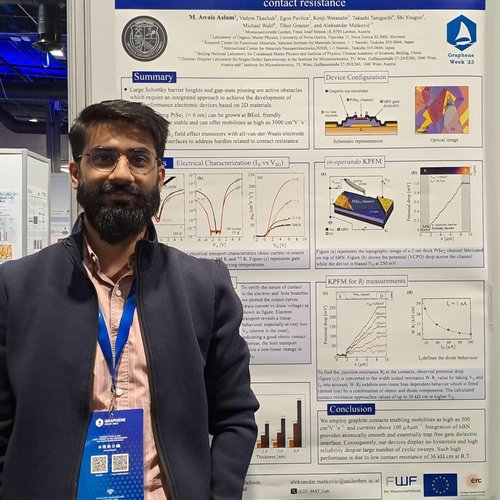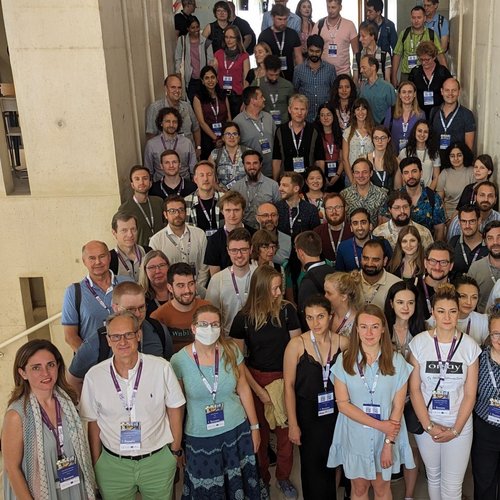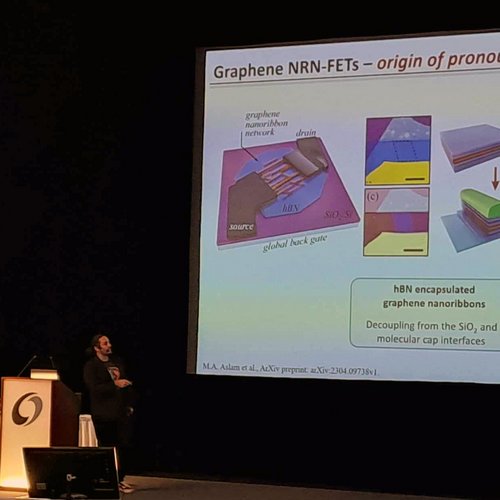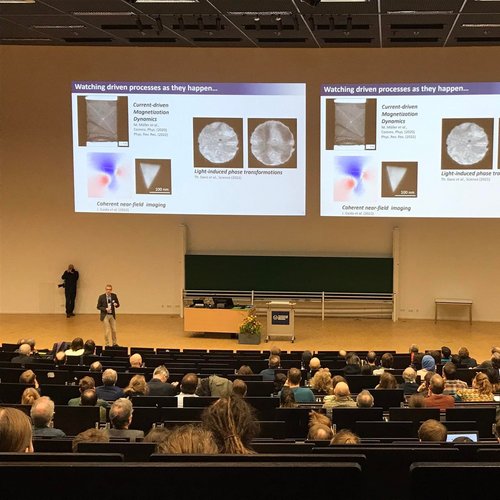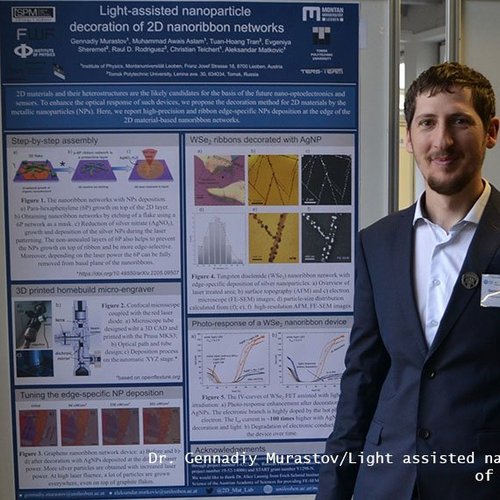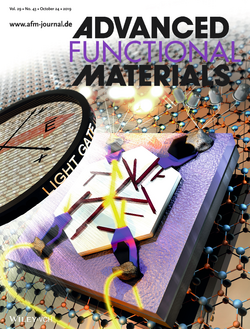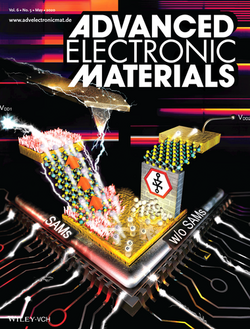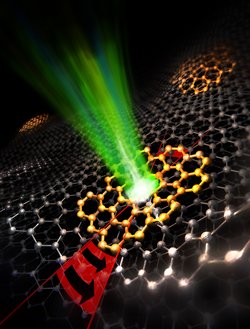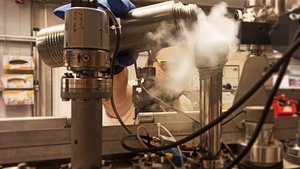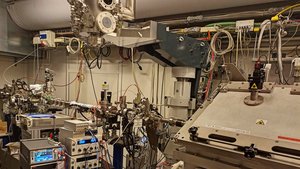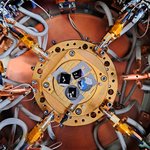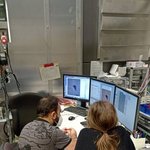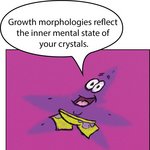About Us
Our research interests are mostly interconnecting between the fields of materials science, solid state physics, and nanoelectronics; focusing on experiments and device fabrication. The core of our research rests in two-dimensional (2D) materials and hybrid mixed-dimensional van der Waals heterostructures. We are stirred by nature, as by self-assembly processes seen in biological systems and complex yet pristine crystal structures (minerals) which elude synthesis or even prediction by the state‑of‑the‑art techniques. Inspired by such natural systems, we seek novel fabrication concepts based on self‑assembly and self‑alignment processes, 2D minerals, and new nanotechnology device concepts in the fields of nanoelectronics, plasmonics, and neuromorphic/synaptic electronics. |
Seminars
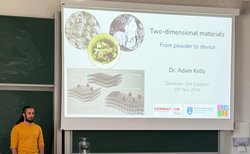
Two-dimensional materials: From powder to device
Dr.Adam Kelly I3N/CENIMAT, Faculty of Science and Technology, Universidade NOVA de Lisboa, Portugal
The field of two-dimensional nanomaterials has exploded over the past two decades, driven by the isolation of graphene from graphite and the demonstration of its superlative properties, such as high carrier mobility, tensile strength, and thermal transport. Beyond graphene, there are over 5000 materials in the 2D family, which contain almost all the properties relevant to electronics, from conductors to dielectrics, thermoelectrics to piezoelectrics, and so on. The ability to synthesise and process these materials in solution allows us to apply similar techniques to the entire 2D family, produce 2D nanosheets at scale, and create networks of nanosheets that can be used as electronic devices using high throughput printing techniques. For such devices, the two-dimensional geometry of the nanosheets provides distinct advantages for printed devices compared to other materials with 1D and 0D geometries. In this presentation, I will discuss state-of-the-art solution-processing techniques, covering various exfoliation techniques, techniques for sorting nanosheets by length and thickness, the requirements for creating high performance networks of nanosheets, the benefits of the 2D geometry, and a range of electronic applications.
Condensate Biology at the Synapse
Dr. Dragomir Milovanovic, group leader at Laboratory of Molecular Neuroscience, German Center for Neurodegenerative Diseases, Berlin, held an interesting talk about importance of understanding behavior of proteins and their condensates. In our joint collaboration we look how we can implement 2d materials to better understand charge governed processes in molecular biology.
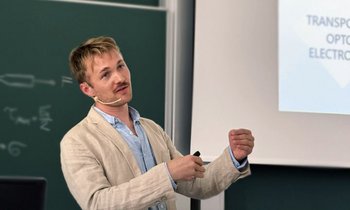
Prospects of Isotope-pure SiGe Heterostructures for Quantum Computing
Dr. Kevin-Peter Gradwohl Leibniz-Institut für Kristallzüchtung (IKZ), Berlin, Germany
Silicon (Si) and germanium (Ge) are the workhorses of the modern semiconductor industry, where decades of science and technology development yielded advanced device fabrication of extremely pure materials. This tremendous know-how, together with the possibility to produce isotopically enriched Si and Ge completely free of isotopes with nuclear spin, make them also extremely interesting for application in quantum computing utilizing spin qubits.
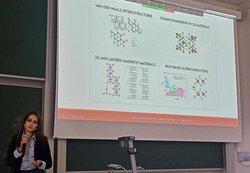
Advanced Computational Material Engineering for Two-Dimensional and Layered Systems
Advanced computational material engineering techniques represent one of the cornerstones of progress in modern materials science, driving innovation and discovery. This approach harnesses the power of advanced computational techniques to design, analyze, and optimize materials within the intricate realm of 2D and layered systems. It opens new frontiers for enabling breakthroughs in fields ranging from nanotechnology to renewable energy and beyond, offering unprecedented opportunities for innovation and discovery. During the presentation, a concise overview of various research endeavors was provided, each exemplifying the application of computational studies in the exploration of diverse aspects of 2D materials research. These include manipulation of properties of materials using nano-mechanical modification (strain engineering in 2D materials), the design of vander-Waals heterostructures, research of magnetic systems and tuning of properties in superconductors. These studies promise pathways to applications across a multitude of fields, highlighting the expansive potential of computational materials engineering
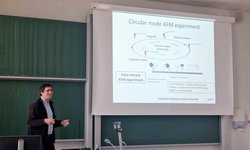
Exploring Collective Dynamics of Small Molecules on CarbonBased Layered Materials with Molecular Dynamics Simulations
Dr. Igor Stankovic
This presentation delved into the intriguing world of small molecules and their collective dynamics, offering insights into their behavior in diverse nanoscale systems. Graphite and graphene, are two remarkable carbon-based materials, that have been at the forefront of a revolution in the fields of energy storage and two-dimensional electronics. Graphite, a layered material composed of stacked graphene sheets, has long been used as the anode material in conventional lithium-ion batteries. However, the quest for higher energy density and faster charging capabilities has driven researchers to explore novel electrolytes and modifications of graphite. Graphene, the single-layer counterpart of graphite, comprises a honeycomb lattice of carbon atoms. Graphene is incredibly thin, lightweight, and possesses outstanding electrical conductivity. This talk presents three examples where molecular dynamics simulations were combined with state-of-the-art experiments to reveal the fascinating diversity of collective interactions of small molecules in contact with carbon-based layered materials. At the largest scale, we challenge conventional paradigms by investigating friction mechanisms in hydrophobic contact with highly ordered pyrolytic graphite HOPG [1]. Through a combination of experimental investigations and molecular dynamic simulations, we introduce a novel mechanism involving the agglomeration dynamics of water droplets, resulting in the formation of larger droplets within sliding nano-contacts. This mechanism elucidates the experimental tribological behavior, emphasizing the crucial role of water molecules in understanding friction on hydrophobic surfaces.
